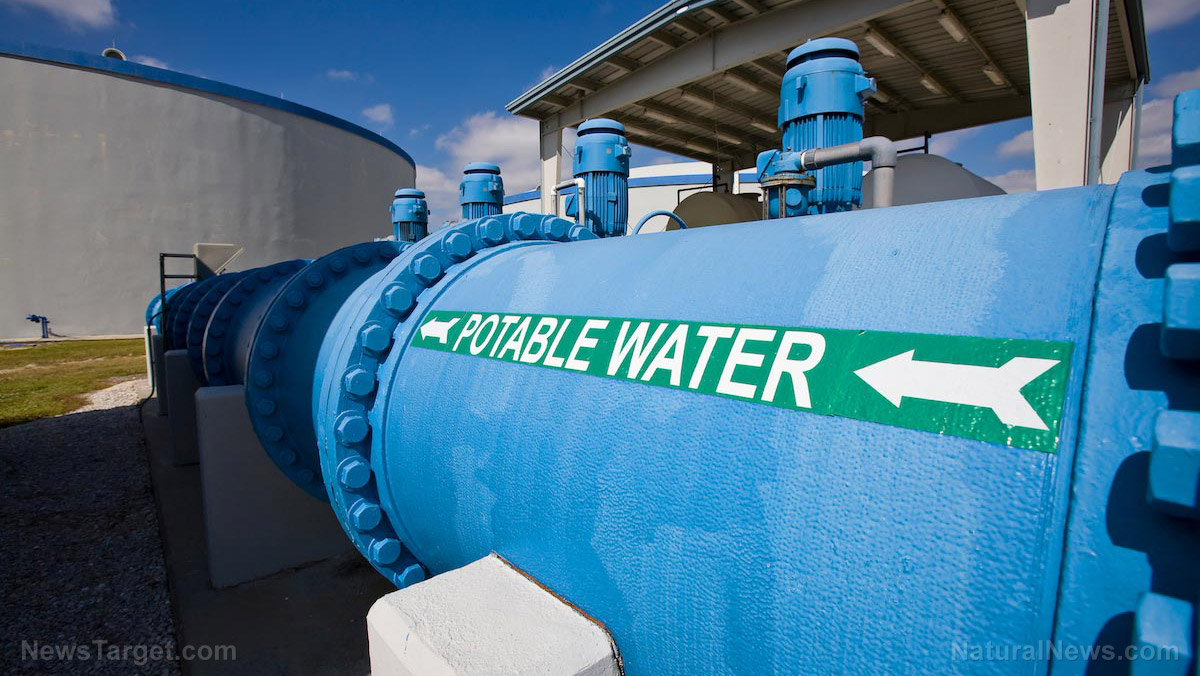Floating a new idea to conserve space: Solar panels are now being installed on floating water rafts
06/21/2019 / By Edsel Cook

In 2008, a winery in Napa Valley, California set up the first floating solar array in the world. The idea of floating solar panels became popular in Asia, but it only gained traction in the U. S. in recent years.
Experts believe that floating solar arrays on artificial bodies of water might produce more than 400 gigawatts of energy. The world’s largest floating solar farm is in Huainan, China. It generates 40 megawatts and provides power for 15,000 homes. Southeast Asian countries like Thailand are also investing in this technology.
A floating installation consists of photovoltaic panels mounted on floating pontoons. The array is anchored to the bottom of a reservoir or retention pond by tethers. Cables haul the electricity produced by the solar panels to an inverter on shore. The inverter converts the direct current into an alternating current that is compatible with the local power grid.
Floating solar arrays present several engineering challenges to potential users and designers. The equipment must be sturdy enough to endure high waves and wind. Their parts need to resist the corrosive effect of their moist environment. The anchors and tethers have to last for at least 25 years without breaking. (Related: Here are a few ideas for using solar energy around your home.)
The advantages of floating solar panel arrays
At the same time, floating solar farms offer benefits compared to their terrestrial counterparts. The most obvious advantage is that they do not occupy tracts of valuable land. The untouched real estate may be used to host homes or farmland.
A floating solar panel is also simpler to set up than a landbound or roof-mounted photovoltaic system. The fully assembled unit is towed to its position before getting anchored. No one has to haul the bulky device onto a roof or up the hill.
Floating photovoltaic arrays improve the conditions of the artificial body of water that host them. They keep large amounts of sunlight from hitting the water, reducing the rate of evaporation and preventing sudden blooms in the populations of local photosynthetic algae.
Finally, the water increases the effectiveness of the solar array by cooling it down. Photovoltaic cells lose efficiency as their temperatures climb. A waterborne, water-cooled solar array is up to 20 percent more efficient at converting sunlight into energy.
Despite these advantages, the U.S. is taking its time to adopt this method of renewable energy production. The birthplace of floating solar farms operates 14 such installations as of 2018.
Floating solar farms might one day spread across artificial bodies of water in the U.S.
Experts attribute the slow growth of floating solar arrays to the availability of open land for conventional photovoltaic systems. They also note the considerable cost of purchasing, assembling, and installing large numbers of photovoltaic panels. A solar farm may take years to pay for its initial investment.
Last but not least, many investors remain uncertain about the capabilities of floating solar farms. They know what solar power and offshore wind energy can do, but putting the solar panels on water throws them off.
“We’re going to need to have a few high-profile projects that really demonstrate that this can happen at scale and by major players,” explained National Renewable Energy Laboratory (NREL) researcher Robert Spencer. He served as a co-author in a 2018 report that showed how the U.S. might get up to 10 percent of its yearly energy output from floating solar panels installed on 27 percent of the country’s artificial bodies of water.
Fortunately, American cities, regions, and companies are taking note of floating solar farms. The clean energy system is expected to flourish in California and other states where real estate is expensive.
Sources include:
Tagged Under: breakthrough, California, Ecology, electricity, environ, floating solar farm, goodtech, green energy, innovation, inventions, Napa Valley, photovoltaic technology, power grids, renewable energy, science and technology, solar farms, solar panels, solar power
RECENT NEWS & ARTICLES
COPYRIGHT © 2017 FUTURETECH.NEWS
All content posted on this site is protected under Free Speech. FutureTech.news is not responsible for content written by contributing authors. The information on this site is provided for educational and entertainment purposes only. It is not intended as a substitute for professional advice of any kind. FutureTech.news assumes no responsibility for the use or misuse of this material. All trademarks, registered trademarks and service marks mentioned on this site are the property of their respective owners.



















